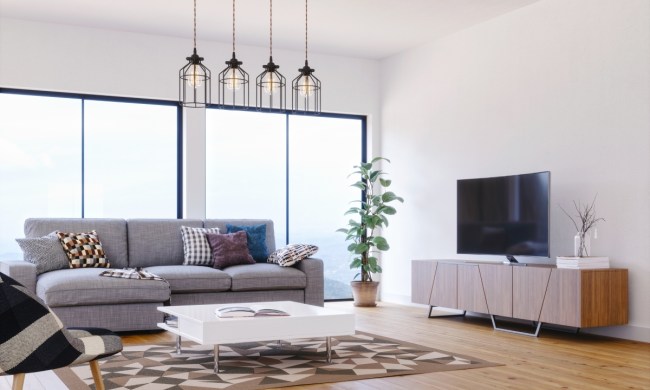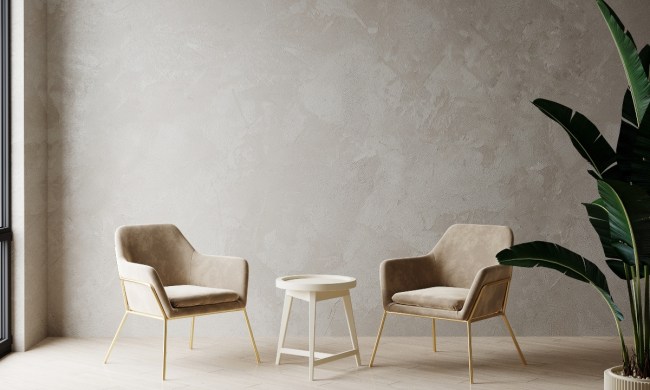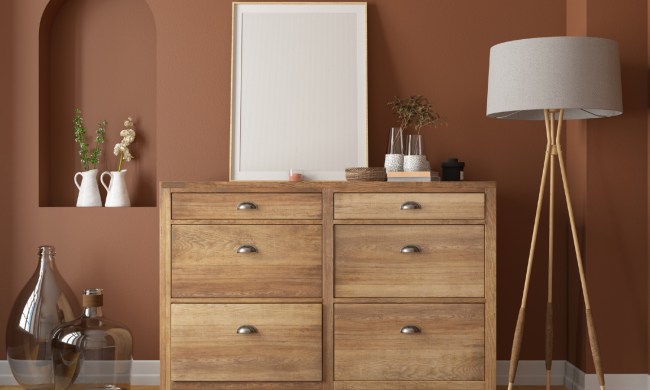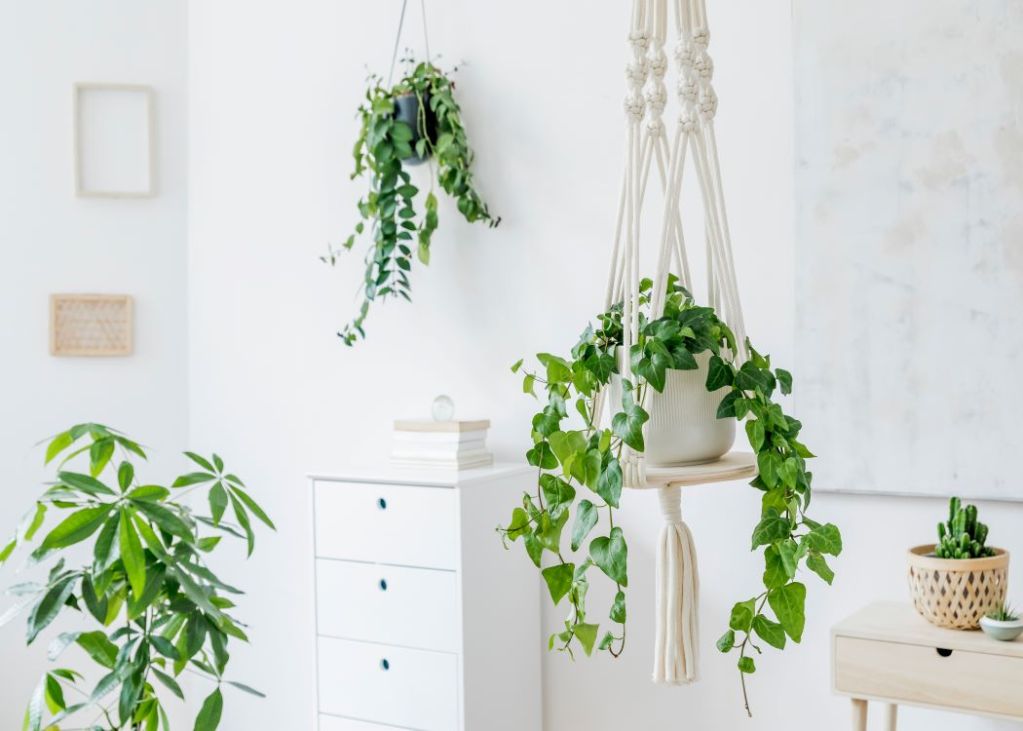
Hanging plants can certainly make a strong statement in the right room, but it can be tricky to choose the right one for your household. While it’s essential to pick one you like, it also must match the amount of sunlight available, the frequency of watering necessary, as well as any possible exposure to children and household pets or other animals. (Although they are hanging plants, once they begin growing, clever animals may find their way up high enough to gnaw on their tantalizing, leaves — which is why it’s important to know if they’re toxic to pets).
With these matters in mind, we’ve highlighted some of the most interesting hanging plants available below, along with a few facts about each one that should help your decision along.
String of beads

A visually stunning plant, the string of beads is sometimes called ‘the Catholic plant’ because of its resemblance to a Rosary. It’s a succulent that grows in long, fleshy vines, very unique and pleasing to the eye. From Africa originally, this plant thrives in dry soil (let it almost dry out between watering), bright, indirect sunlight, and dry air. Do be careful to keep it out of reach of children and pets, though; it’s toxic enough to cause significant abdominal distress, vomiting, and irritated skin if ingested or touched. If you believe your child has ingested this plant, call the Poison Control Center; call the veterinarian if you suspect your pet ate any.
Get one in a 2-inch pot for $10.00 from Etsy’s Artinthe Garden shop.
Fish Hooks
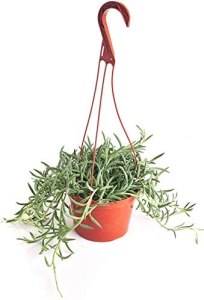
You can’t find a much more interesting-looking plant than this! With leaves shaped like literal fish hooks, this plant deserves a perfect spot for display in the household. Give it a home near a window, but only for about 6 hours of indirect sunlight per day — and protect it from constant hot summer sun. Soil should be a well-drained potting soil mix according to plant instructions, fertilized every 2 – 4 weeks during warmer months, and water should be given every 2 weeks. In the winter, you can water it monthly.
Get a 6-inch pot for $25.00 on Amazon.
Air plants
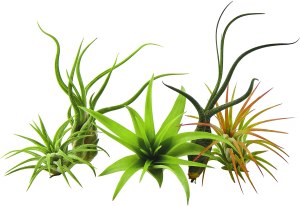
Tillandsia, or Air Plants, are so light, you won’t believe they’re living plants. They don’t need soil, either. The Sill recommends hanging them by a string inside a hanging globe planter with an air hole for proper circulation. They’re also great for terrariums. Keep it near bright, indirect sunlight and water once per week (this is done by soaking them in lukewarm water for 15-30 minutes). After that, offer the plant mistings between waterings to keep the humidity up.
These are air-purifying plants, and non-toxic for pets.
Get a set of 5 for $14.00 from Amazon — and order during warm months as they are shipped from Puerto Rico and cannot tolerate being left in the cold for long periods of time.
Lipstick Plant
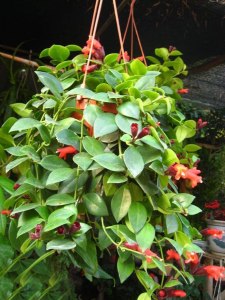
Another non-toxic beauty, this plant produces flame red blooms that look like an open tube of lipstick. Originally found in the West Indies, the Lipstick Plant requires indirect bright sunlight. Water it only after the top layer gets completely dry. Easy to grow, and available for immediate shipping.
Get a 2-pack of 3-inch pots for $6.00 at Amazon.
Heartleaf philodendron
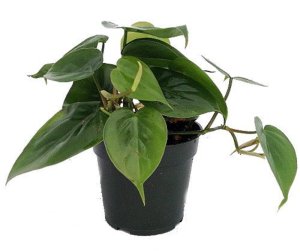
Get one in a 4-inch pot for $11.00 from Amazon.
Boston Fern
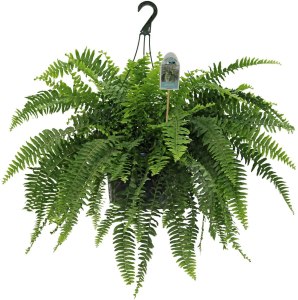
This leafy beaut is an air-purifier too, and will thrive in your home if you give it enough humidity. Let it sit in indirect, bright sunlight, maintain an average temperature between 65 and 75 F, and check the roots annually. Soil should remain moist. These are tempting, but luckily non-toxic to pets.
Devil’s Ivy
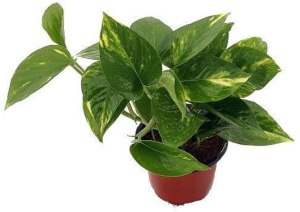
This is a great beginner plant as it’s one of the most difficult to kill. It turns into a gorgeous hanging plant as its leaves grow long and possibly in more than one color. Give it steady, indirect sunlight, a good swill of water when dry, and place it anywhere with a comfortable temperature. Easy to grow.
Get a 4-inch pot for $9.00 at Amazon. Ships immediately.
Spider Plant
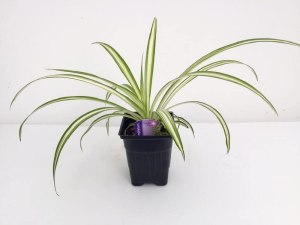
Another excellent plant for beginners, especially if you forget you have plants once in a while. The air-purifying Spider Plant looks great in a hanging planter once it starts to hang down far enough. Keep it in medium humidity and moderate indirect sunlight with occasional bouts of shade. Give it some food once in a while. Works well in the office, dormitory or other similar space.
Get a 4-inch pot for $12.00 at Amazon.
If you’re interested in getting a hanging plant, try starting with one or two of these unique varieties (like the recommended ones specifically named for beginners, like the Devil’s Ivy and Spider Plant) and see how it goes, then consider getting one or two more to complement the first. It pays to get plants with the same needs, i.e. indirect, bright sunlight, watering once every two weeks, misting in between, etc., as you won’t have to memorize several very different care schedules.
There are companies that help newbie gardeners get started with their plants, such as one in NYC called The Sill as well, where you can sign up for subscriptions based on your needs (no sunlight in your apartment, have pets so need only pet-friendly plants, etc.) If you need such a service, go ahead and reach out here for more details. You can get your first subscription sent out the first month. Have fun getting accustomed to plants!
Want more? Check out some cute tiny plants for your home, if you want to enhance your space with some greens.

